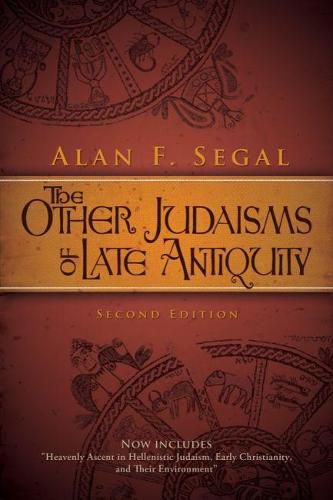Readings Newsletter
Become a Readings Member to make your shopping experience even easier.
Sign in or sign up for free!
You’re not far away from qualifying for FREE standard shipping within Australia
You’ve qualified for FREE standard shipping within Australia
The cart is loading…






In The Other Judaisms of Late Antiquity the late Alan F. Segal is at his very best. This reissued and expanded editionanow containing his celebrated Heavenly Ascent in Hellenistic Judaism, Early Christianity, and Their Environment adelineates the variegated nature of both Judaism and Christianity in their formative periods. As Segal demonstrates, it is more accurate to speak of Judaisms and Christianities. Through his deft deployment of social-scientific methods and due attention to Jewish primary sources from the Second Temple period, Segal is able to trace the intricate, internecine struggles among Jewish, Christian, and gnostic communities in the earliest days of the Common Era. In doing so, Segal masterfully validates the importance of inductive historical reconstruction and analytical comparative study for illuminating the complex religious world of the first three centuries.
$9.00 standard shipping within Australia
FREE standard shipping within Australia for orders over $100.00
Express & International shipping calculated at checkout
In The Other Judaisms of Late Antiquity the late Alan F. Segal is at his very best. This reissued and expanded editionanow containing his celebrated Heavenly Ascent in Hellenistic Judaism, Early Christianity, and Their Environment adelineates the variegated nature of both Judaism and Christianity in their formative periods. As Segal demonstrates, it is more accurate to speak of Judaisms and Christianities. Through his deft deployment of social-scientific methods and due attention to Jewish primary sources from the Second Temple period, Segal is able to trace the intricate, internecine struggles among Jewish, Christian, and gnostic communities in the earliest days of the Common Era. In doing so, Segal masterfully validates the importance of inductive historical reconstruction and analytical comparative study for illuminating the complex religious world of the first three centuries.